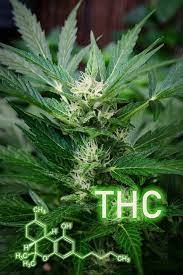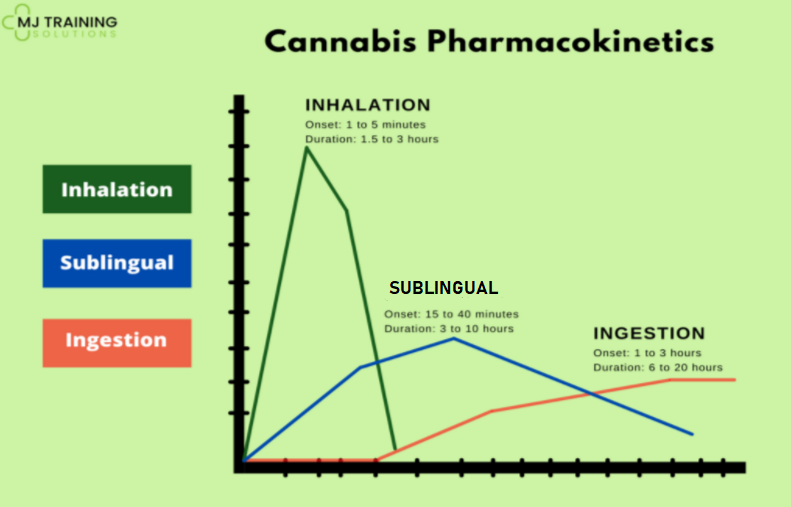Chronic Pain and Cannabis
Chronic pain is a prevalent and multifaceted condition affecting over 50 million adults in the United States. Current pharmacological treatments, such as opioids and NSAIDS have fallen short of relieving pain for many patients, and these classes of medications have serious and dangerous side effects. Using cannabis for pain can be traced back to ancient Chinese writings, dating to 2900 BCE, and there is evidence that cannabis was used to treat pain in ancient Egypt, Greece, and India. In 2017, The National Academies of Sciences, Engineering, and Medicine published their review of 29 randomized trials and concluded that cannabis is an effective treatment for chronic pain among adults.
Watch our Video on Chronic Pain and Cannabis to Learn More!
Easing Pain : Know the Components of Cannabis
THC - Tetrahydrocannabinol
Cannabis contains chemicals called cannabinoids that interact with the human body’s natural endocannabinoid system. More research is needed concerning Cannabis and the many different types of pain.
THC, or tetrahydrocannabinol, is one of the two major cannabinoids found in cannabis. THC has been shown to relieve central and neuropathic pain. THC can modulate pain at the level of the spinal cord and brain by directly activating CB1 receptors and indirectly by increasing opioid receptor activation. Like several other chemical components in cannabis, THC has anti-inflammatory properties that can contribute to pain reduction too.
CBD - Cannabidiol
Cannabidiol or CBD is the other major cannabinoid. CBD has been shown to provide analgesic effects for neuropathic and inflammatory pain. CBD impacts pain by increasing levels of the endogenous cannabinoid, anandamide, and by reducing inflammation. CBD seems to target other receptors beyond the endocannabinoid system that may reduce pain as well
Benefits of Using THC and CBD Together
For pain relief, using the combination of THC and CBD is more effective than using either cannabinoid alone. Much of the scientific research studying this combination surrounds the European prescription drug, Sativex. Sativex is an oromucosal spray, intended to be sprayed under the tongue or the inside of the cheek. Sativex is a 1:1 product, meaning that it contains 1 part THC to 1 part CBD. Dispensaries in the United States commonly carry similar 1:1 tinctures.
In a randomized controlled trial looking at Cannabis extracts, a THC only product, a THC/CBD combination product, and a placebo were all compared in patients with intractable pain despite opioid treatment. The product containing both THC and CBD proved significantly better than both THC alone and placebo. This study shows that the combination of THC and CBD can help relieve pain in patients with advanced cancer pain not fully relieved by strong opioids.
A follow up study with these patients concluded that the long-term use of the THC/CBD combination was generally well tolerated, with no loss of effect for the relief of cancer-related pain. Furthermore, patients who kept using the medication did not seek to increase their dose of cannabis or other pain-relieving medication over time. These are both significant advantages of cannabis compared to using opioid medications alone.
Minor Cannabinoids
In addition to THC and CBD, over 130 minor cannabinoids have been identified, and several have shown promise in alleviating chronic pain symptoms. For example, preclinical studies have demonstrated analgesic benefits from CBN, CBG, and CBC. More research is needed in this area.
Terpenes
Another class of chemicals found in Cannabis are the terpenes. Terpenes are like the essential oils of cannabis. They contribute to the flavor and aroma of cannabis, and some terpenes do provide analgesic effects. In animal studies, B-Caryophyllene, a terpene that has a pepper-like flavor, was shown to decrease inflammatory and neuropathic pain. Other terpenes, such as Myrcene, Linalool, Pinene, and Limonene, may also contribute to the ability of cannabis to reduce pain.
Choosing Dosage Forms
The different dosage forms of Cannabis have different onsets, delays, and durations. Combining dosage forms can be more effective.
Medical cannabis comes in several types of dosage forms. Most chronic pain patients respond well to longer-acting dosage forms of cannabis, such as tinctures or capsules. And we have seen these dosage forms provide the best reduction in pain over time. It is always recommended to start at a low dose and to increase slowly.
For breakthrough pain, our patients tend to use products that can be vaporized due to the faster onset of action. These inhaled products can be used in conjunction with the longer-acting products to give patients more control over treating their level of pain each day.
Topically applied cannabis products, such as creams and lotions, can also provide site specific pain relief. We have seen these products work particularly well for joint pain and muscle spasms.








